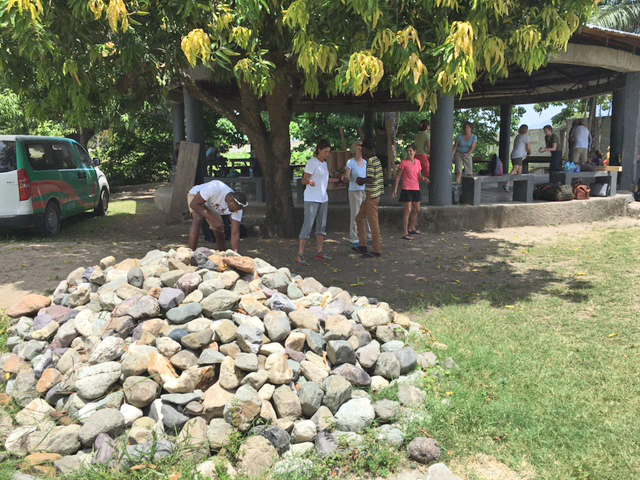An article from the Cathedral Times
by Canon Cathy Zappa
This month, I went to Haiti with twenty other Cathedral members, on our first mission-pilgrimage. Haiti is not an easy place to visit. The moment you step into its airports, you’re entering what feels like a whole different world with different rules. Then, when you exit the airport, you have traffic, dirt roads, food- and water-born parasites, and a steady flow of people to navigate.
But perhaps the hardest part about visiting Haiti is seeing its many signs of poverty: poorly built shanties that will wash away at the first heavy rain; trash lined up along the streets because there is no public sanitation; children so sick and hungry; parents so poor that the only way they can imagine a better life for their children is to give them up. Our visit was centered on the important but difficult work of Eternal Hope in Haiti, which runs mobile medical clinics and an orphanage for medically fragile children.
It was a lot to take in, and it felt overwhelming at times. Once you've seen it, and held and worked with children affected by it, you can't un-see, and you can't not care. You would move mountains to help them, if you could.
 We learned something about moving mountains, though—something that this picture represents to me. At first glance, all you see is a huge mountain of rocks, dumped in the middle of the orphanage. With no truck, it was going to fall to the older children to move these rocks to the boundary of the property, where they would be made into a wall to keep out intruders. So we were asked to help. Sure, I said, though what I was thinking was that it was very hot, the pile was very big, we were very tired, this was a very menial and boring task, and we would never finish. Fortunately, someone with more energy and imagination suggested that we make an assembly line.
We learned something about moving mountains, though—something that this picture represents to me. At first glance, all you see is a huge mountain of rocks, dumped in the middle of the orphanage. With no truck, it was going to fall to the older children to move these rocks to the boundary of the property, where they would be made into a wall to keep out intruders. So we were asked to help. Sure, I said, though what I was thinking was that it was very hot, the pile was very big, we were very tired, this was a very menial and boring task, and we would never finish. Fortunately, someone with more energy and imagination suggested that we make an assembly line.
If you look more closely at the picture, that’s what you'll see: a line of people in the background—old and young, Haitian and American alike—working together and passing rocks to each other (for hours!), with music playing in the background, some dancing, and a whole lot of laughing. You see people paying attention to each other and taking care of each other.
I realized that this is what we had come for: not to move mountains for Haiti or for these children, but to spend time with them, get to know them, learn and listen, and offer ourselves—ourselves, not just our labor and goods, but ourselves. We had come to bear witness, both to the poverty and pain, and to the resilience, strength, and beauty of this land and its people—and to the work that God is already doing among them.
So I cherish this picture, and I want to remember it, whenever I'm faced with an impossible mountain that I want to move: the hope and faith of those who need it moved; the generosity and humility of those willing to help move it; and the relationships that are built, the joy that is discovered, and the hearts and minds that are opened, along the way.
